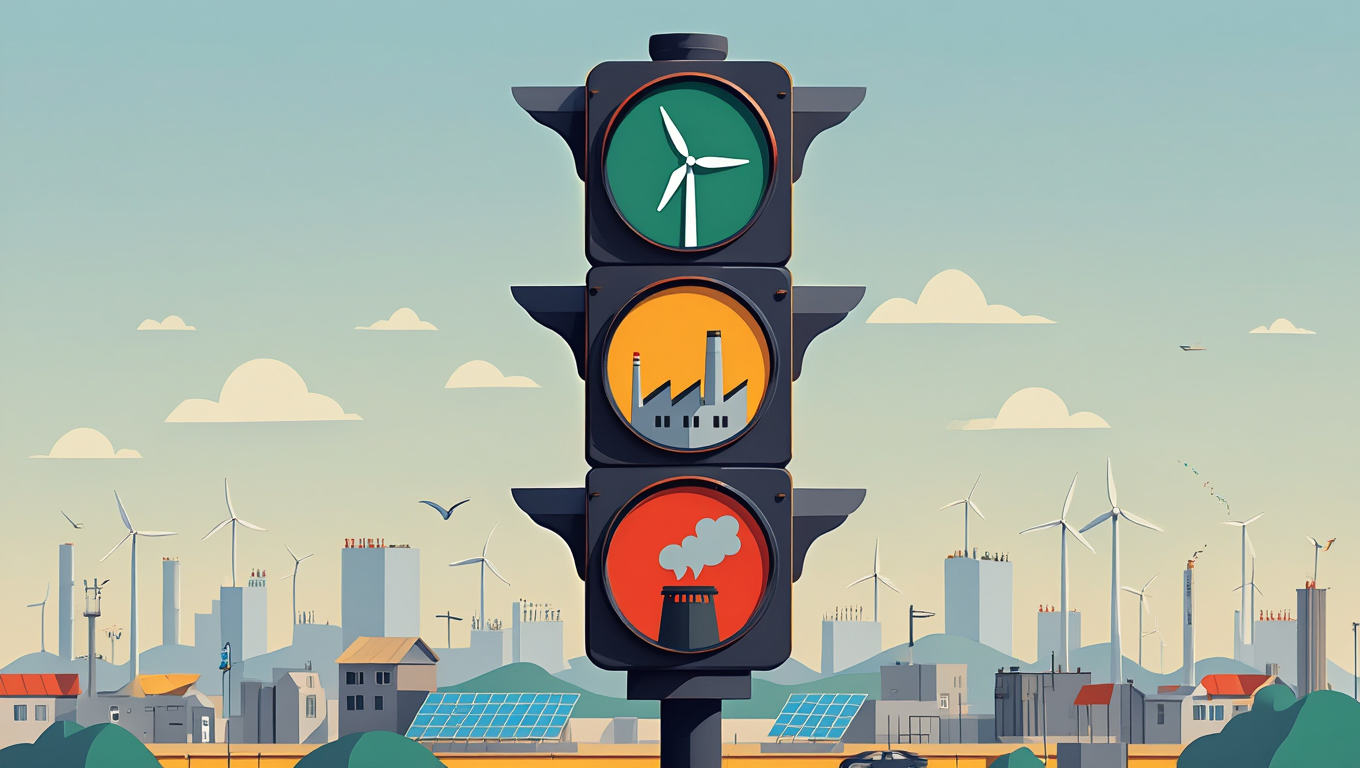-
The European Commission has prepared the Country Report Spain 2025, a detailed analysis of the economic and social evolution and challenges of each Member State. It assesses how national policies address issues such as decarbonization, environmental sustainability, and the shift toward a green economy in Spain’s industrial sector.
-
The report highlights that Spain is making solid progress in the industrial energy transition thanks to a technologically skilled industry, active policies, efficiency improvements, and a high penetration of renewables.
-
Despite the high potential for electrification in Spanish industry, the report identifies constraints that could slow progress, such as a tax system that disfavors electricity compared to gas, limited electrical infrastructure, low interconnection with Europe, a decline in production in energy-intensive sectors, and high emission levels from energy use in manufacturing.
-
Spanish industry faces structural risks such as dependence on imported raw materials and barriers like slow permitting processes, underinvestment in electrical grids, and a loss of competitiveness in key sectors like automotive.
June 13, 2025
How well-positioned is Spanish industry to meet the energy challenges of this decisive decade? Are we leveraging our structural strengths or still struggling with regulatory and technological bottlenecks? The Country Report Spain 2025, prepared by the European Commission, provides a detailed snapshot of Spanish industry, addressing its current state in the face of challenges such as decarbonization, environmental sustainability, and the transition toward a green economy. More than a simple diagnosis, it identifies latent risks, emerging opportunities, and offers strategic recommendations to strengthen industrial competitiveness from a climate perspective.
This report is part of the 2025 European Spring Package, a key EU economic governance tool. The country reports provide a detailed analysis of the economic and social developments and challenges of each Member State, and assess how national policies are addressing these challenges.
To facilitate understanding and encourage reflection on these issues, we propose a visual analogy: an “energy traffic light” for industry. This traffic light helps categorize different aspects of the transition, clearly indicating where progress is being made, where efforts need to be redirected, and where critical risks demand urgent attention.
- Green: We’re doing well — strengths and significant progress.
- Amber: Needs reorientation — areas with potential that require adjustments, greater momentum, or the removal of barriers.
- Red: Danger zone — critical challenges that could jeopardize competitiveness and decarbonization targets if not addressed urgently.
Below, we break down the key aspects of energy management in Spanish industry, categorized using this traffic light system, with data and figures supporting each assessment.
 GREEN: Structural Progress and Installed Capacities
GREEN: Structural Progress and Installed Capacities
The report recognizes several strong pillars supporting the industrial energy transition in Spain: a technologically skilled industrial base, active public policies, improvements in energy efficiency, and a high share of renewables in the electricity system. These factors position Spain advantageously compared to other Member States.
Industrial Capacity in Clean Technologies
Spain has a solid ecosystem of industrial production linked to the energy transition, including:
- 38 active companies in the wind sector.
- Industrial capacities of 5–5.25 GW in nacelles, 15.5–18.5 GW in towers, and 8–8.25 GW in blades.
- Electrolyzer manufacturing capacity: 500–600 MW/year (9–11% of EU total).
- Photovoltaic production: 500–650 MW/year (3% of EU total) and over 30 GW inverters.
- 27 heat pump production facilities.
Efficiency Improvements in Manufacturing
Improvements in emissions intensity, both energy-related and non-energy-related, suggest advances in efficiency, particularly in emissions tied to energy use.
High Share of Renewables in the Electricity Mix
Renewables already account for 57% of electricity generation, and electricity represents 24.7% of final energy consumption — above the 22.9% EU average.
Favorable Policy Framework
Relevant measures have been adopted, such as the PERTE for Decarbonization, the Climate Change and Energy Transition Law, green bonds, and tax incentives.
 AMBER: Partial Progress or Structural Imbalances
AMBER: Partial Progress or Structural Imbalances
While the report acknowledges the untapped electrification potential of Spanish industry, it also identifies structural constraints that may hinder progress. These include a tax system that penalizes electricity use compared to gas, limited infrastructure, and low interconnection with Europe’s energy system — all of which restrict the integration of new renewables. Additionally, the recent contraction of energy-intensive industries and the high levels of energy-related industrial emissions highlight the need to intensify efforts in efficiency and electrification to consolidate an effective transition.
Insufficient Electrification of the Economy
Although electricity’s share in Spain’s final energy consumption has increased to 24.7%, surpassing the EU average of 22.9%, deployment in strategic sectors such as industry and transport remains limited. In industry, electricity represents only 31.3% of final energy use, and in transport just 1.2%. By contrast, electricity already represents 45.4% of household energy consumption, showing significant untapped potential for industrial electrification, especially in processes below 200°C.
High Share of Emissions from Energy Use in Manufacturing
While industrial GHG emissions in Spain (22%) align with the EU average, a particularly notable data point is that 63% of these emissions come from energy use in industrial processes — compared to 57% EU average. This places Spain among the five EU countries with the highest proportion of industrial emissions tied to energy consumption, underscoring the high potential impact of electrification and efficiency on decarbonizing the sector.
Contraction of Energy-Intensive Industries
Despite energy prices in Spain remaining below the EU average since 2023, production in energy-intensive industrial sectors has fallen by up to 12% since 2021. These sectors accounted for 14% of manufacturing gross value added in 2022.
Unfavorable Electricity Taxation
Electricity bears a 24% tax burden in the final bill, discouraging its use compared to gas — both in industry and households. This contrasts with the EU average, where electricity taxes account for just 15.4% of the total price.
Limited Infrastructure and Low EU Interconnection
While projects are underway, Spain’s electricity interconnection with Europe remains below 5%. Transmission and distribution infrastructure investments are capped at annual limits set in 2013 (0.065% and 0.13% of GDP, respectively), limiting the capacity to absorb new renewable generation.
Policies Implemented but Insufficient
Spain has adopted policies such as the PERTE for Industrial Decarbonization, the Climate Change and Energy Transition Law, green bonds, and tax incentives. However, further efforts are needed, especially in energy-intensive sectors.
 RED: Structural Risks and Critical Bottlenecks
RED: Structural Risks and Critical Bottlenecks
As in other Member States, Spanish industry faces structural risks tied to its reliance on imported raw materials, especially those critical to the energy transition. In addition, specific barriers include slow permitting procedures, underinvestment in the electricity grid, and declining competitiveness in key sectors like automotive.
Lack of Collaboration in the Net-Zero Ecosystem
Spanish industry lacks a coordinated, collaborative ecosystem. There is insufficient articulation among companies, research centers, startups, universities, and public administration. Knowledge transfer between academia and the productive sector remains weak. From Foro Industria y Energía, we have always emphasized the need for effective collaboration among all actors in the industrial value chain as a foundation for accelerating a fair, efficient, and technically viable transition.
High Emission Intensity in Key Sectors
Examples include metals manufacturing with 5.9 kg CO₂eq per euro of GVA (vs. 3.5 kg/€ in the EU) and paper and paper products with 1.1 kg/€ (vs. 0.68 kg/€ in the EU).
Dependence on Critical Raw Materials
42% of manufacturing industry inputs are imported (EU average: 22%). Dependence on materials like lithium, cobalt, and rare earths makes the industry vulnerable to disruptions, environmental problems, and social risks. The import concentration index is 0.16 (EU: 0.18).
Regulatory Barriers in Permitting
Renewable project permits take 18 to 24 months. Additionally, Spain has yet to transpose the RED III Directive, limiting regulatory clarity and predictability for industrial investors.
High Industrial Concentration in the Automotive Sector — Now at Risk
Spain is the EU’s second-largest car manufacturer and the ninth worldwide. The sector represents 10% of GDP and 18% of total exports. It is the leading industrial sector in R&D investment, with €6.776 billion invested by component manufacturers between 2017 and 2021. Despite its strength, it faces major risks such as falling demand and supply chain disruptions, which could reduce competitiveness.
Obsolete Grid Investment Limits
Annual investment limits in the grid have remained unchanged since 2013: 0.065% of GDP for transmission and 0.13% for distribution. These limits are barriers to absorbing additional renewable capacity.

